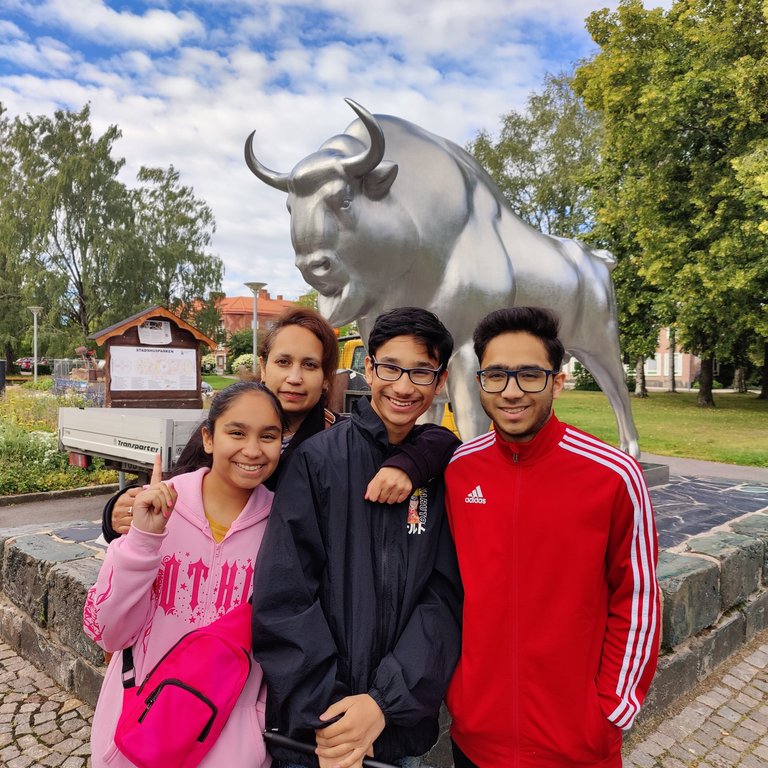In one corner of Avesta, there's the world's largest concrete horse called Dalahäst. Most people might think this horse represents Dalarna but it actually symbol of Sweden. When it comes to Avesta, the connection involves a Visent (European Bison).
But what is the connection between Visent and Avesta? And why did the people of Avesta use Visent as a symbol?
A Visent is an European name of Bison and it's not surprising if you've never seen one. About 1000 years ago, this animal was found in Swedish forests but now you can only see it in zoos or special parks. There is a deep connection between this animal and Avesta.
When the last Visent was hunted in 1927, people felt regret and started a breeding program to save Europe’s largest wild mammal. Two Swedish men played an important role in this: zoologist Alarik Behm and industrialist Axel Ax Johnson, who owned Avesta Jernverks AB.
In 1924, Axel Ax Johnson brought 6 Visents from Skansen and placed them in a park near Norberg for breeding. In 1939, the park was moved to Stubbsvedens farm near Avesta and in 1952, the Visent became the symbol of Avesta Jernverk.
In 1969, a Visent bull named Pudam was brought from Poland and Lars Andersson made a steel statue of Visent which now decorates the entrance of Avesta Jernverk.
Today, Avesta Jernverk is part of Outokumpu Stainless and the Visent statue now stands in front of Avesta’s city hall. Visent Park is still maintained by Avesta and has been open to the public since 2012.
Because of Visent Park Avesta is the first place in Europe to provide Visents to other countries so they can be reintroduced into the wild. Since 2014 it's also part of the EU project called Rewilding Europe.
I’ve also made a video in Urdu/Hindi about this story, which I’m sharing with you.

Congratulations @shahzad-ansari! You received the biggest smile and some love from TravelFeed! Keep up the amazing blog. 😍 Your post was also chosen as top pick of the day and is now featured on the TravelFeed front page.
Thanks for using TravelFeed!
@for91days (TravelFeed team)
PS: You can now read your favourite travel blogs on your phone. Plus, blogging on-the-go just got easier! Download our app on the Apple App Store or get it on Google Play.
Thank you so much.
Congratulations, your post has been added to WorldMapPin! 🎉
Did you know you have your own profile map?
And every post has their own map too!
Want to have your post on the map too?
Congratulations, your post has been added to the TravelFeed Map! 🎉🥳🌴
Did you know you have your own profile map?
And every post has their own map too!
Want to have your post on the map too?
- Go to TravelFeed Map
- Click the create pin button
- Drag the marker to where your post should be. Zoom in if needed or use the search bar (top right).
- Copy and paste the generated code in your post (any Hive frontend)
- Or login with Hive Keychain or Hivesigner and click "create post" to post to Hive directly from TravelFeed
- Congrats, your post is now on the map!
PS: You can import your previous Pinmapple posts to the TravelFeed map.Opt Out